October itinerary in Japan Day 8 (Hyogo Day 2)
(Wednesday, October 27)
Table of contents
5. The Former Residence of the Kinoshita Family
7. The Former Residence of Sanji Muto
8. Sun Yat-sen Memorial Hall (Ijokaku)
1. Akashi Castle Ruins
The 8th day is the last day of this trip. First I went to Akashi Castle Ruins. The train I got on from Himeji is as follows. The Shinkaisoku (Special Rapid Service) runs about once every 15 minutes.
Depart Himeji Station at 9:11, JR Kobe Line Special Rapid Service bound for Tsuruga, arrive at Akashi Station at 9:35, fare Yen680
Akashi Castle is not as famous as Himeji Castle, but the two triple Yagura (turrets) are national important cultural properties. Akashi Castle’s Tatsumi Yagura and Hitsujisaru Yagura are valuable, as are two of the only 12 existing triple turrets in Japan. Both were made in 1620. In the first photo, the Tatsumi Yagura is on the right side and the Hitsujisaru Yagura is on the left side.
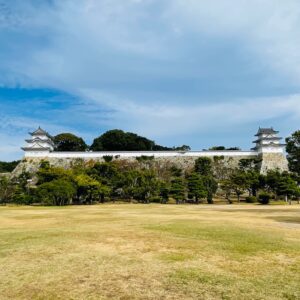
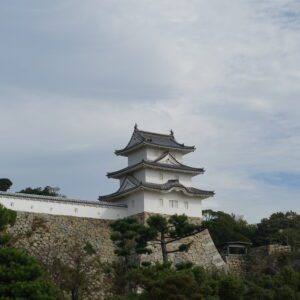
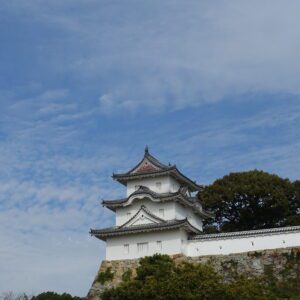
By the way, it is said that Miyamoto Musashi did the city planning for the castle town of Akashi. Akashi feels close to you when you interact with Miyamoto Musashi, which everyone knows. Akashi is also a “town of time” through which the 135th meridian east longitude, which is Japan Standard Time, passes. There were various sundials in Akashi city, and there was also a sundial in the Akashi castle square.
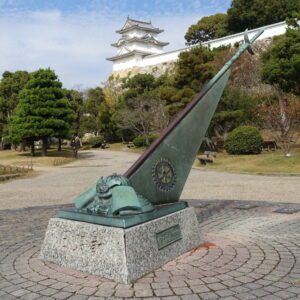
Admission free
The tour of the inside of the turret is suspended
2. Awaji Jenova Line
After visiting Akashi Castle Ruins, I went to Awaji Island from Akashi Port by “Awaji Jenova Line”. The ships I boarded are as follows.
Depart Akashi Port at 10:30, arrive at Iwatani Port at 10:43, fare Yen530
The Awaji Jenova Line is a recommended route to Awaji Island while looking at the Akashi Kaikyo Bridge. You can also go under the Akashi Kaikyo Bridge by boat. The Akashi Kaikyo Bridge is the longest suspension bridge in the world with a total length of 3,911 m that connects Honshu and Awaji Island.
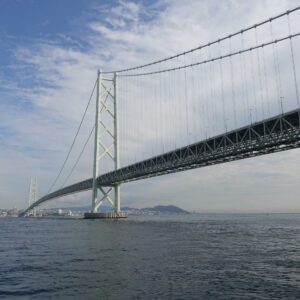
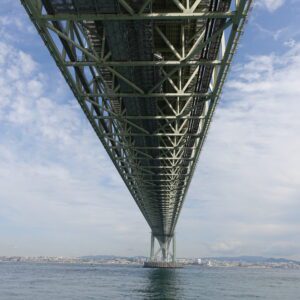
Akashi’s famous sea bream and octopus are written on the Awaji Jenova Line ship.
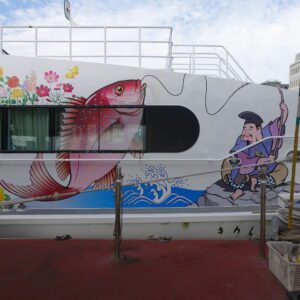
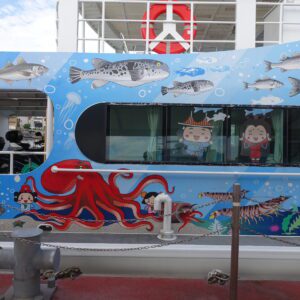
3. Roadside station “Awaji”
I went to the roadside station “Awaji” by bus from Iwaya Port. The main purpose is to eat. The bus I got on is as follows.
Depart Iwaya Port Terminal at 10:55, counterclockwise, arrive at Roadside Station Awaji at 11:00, fare Yen500
Roadside station “Awaji” is near the pier of Akashi Kaikyo Bridge, so you can see the bridge up close. You can understand how big the pier is from the size of the person in the picture of the pier.
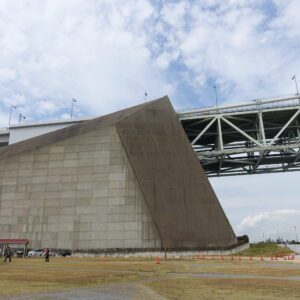
Although it is rusty and cannot be seen by anyone, the submersible used when the bridge was built is also on display.
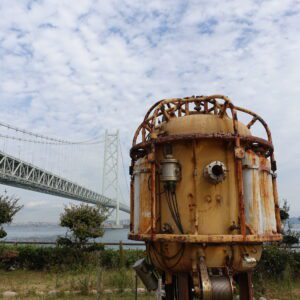
Roadside station “Awaji” is a popular roadside station because you can see the bridge up close and there are many restaurants. On Saturdays, Sundays, and holidays, the parking lot is full and traffic jams occur. After all, it is recommended to go by boat or bus.
The fare for the Awaji City community bus “Awajin Awahime Bus” is as high as 500 yen per ride. The one-day pass for unlimited rides is 1,000 yen, so if you ride more than once, it is better to buy a one-day pass. A one-day pass can be purchased from the bus driver.
The bus stop of “Awaji”, the roadside station of “Awajin Awahime Bus”, is located along the road. There is also a free shuttle bus stop in the parking lot of the roadside station “Awaji”, which is confusing. I made a mistake. You should be careful.
If you are lucky, you can take the golden bus (which runs irregularly). I was lucky enough to see the golden bus.
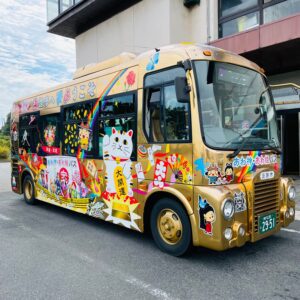
4. Awaji Yume Butai
After having a meal at the roadside station “Awaji”, I went to Awaji Yume Butai on the community bus “Awajin Awahime Bus”. The bus I got on is as follows.
Depart Roadside Station Awaji 12:03, clockwise, arrive at Awaji Yume Butai Mae at 12:32, fare Yen500
The bus stops at Iwaya Port Terminal on the way for 10 minutes.
Awaji Yume Butai is a group of facilities designed by Tadao Ando, one of Japan’s leading architects. The scale is too big to fit all of Awaji Yume Butai in one photo. It takes more than an hour just to walk around everything. It is a pleasant place where you can see Osaka Bay.
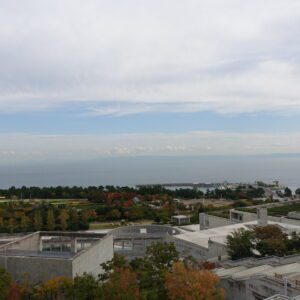

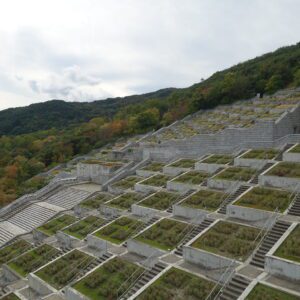
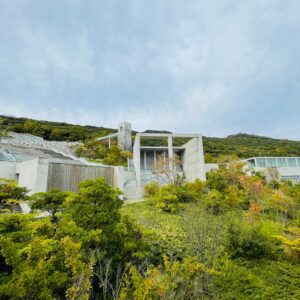
Admission free
5. The Former Residence of the Kinoshita Family
From Awaji Yume Butai, I took a high-speed bus through Akashi Kaikyo Bridge to Maiko Station, and went to the The Former Residence of the Kinoshita Family, which is about a 10-minute walk away. The bus I got on is as follows.
Depart Awaji Yume Butai at 13:46, for Shin-Kobe Station, arrive at Kosoku Maiko at 14:01, fare Yen520
The bus is convenient, but you can’t see the bridge because it passes through the Akashi Kaikyo Bridge. We recommend using a boat that allows you to enjoy the bridge from the sea, even if it is only one way.
The Former Residence of the Kinoshita Family is a modern Japanese-style house built in Sukiya style, completed in 1941 (Showa 16). It is a national tangible cultural property. The staff explained the hall very carefully. There were many calm Japanese-style rooms, which made me feel at ease.
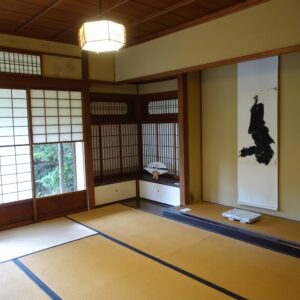
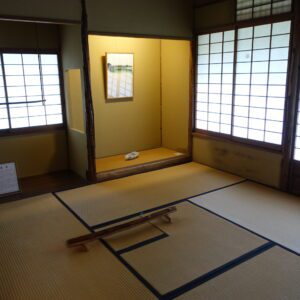
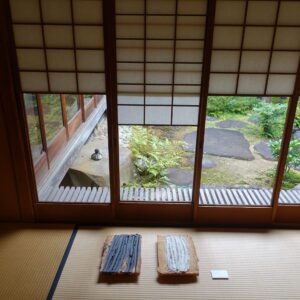
Admission: Yen100
Common admission ticket for the three residences (The Former Residence of the Kinoshita Family, The Former Residence of Sanji Muto, Sun Yat-sen Memorial Hall): Yen340
6. Goshikizuka Tumulus
I went to the Goshikizuka Tumulus, which is a little over 10 minutes on foot from the Former Residence of the Kinoshita Family. The Goshikizuka Tumulus is a “keyhole‐shaped” tumulus (total length 194 m, rear circle height 18 m) built from the end of the 4th century to the beginning of the 5th century. We do not know who was buried.
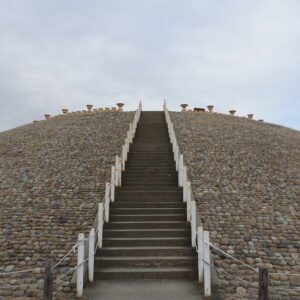
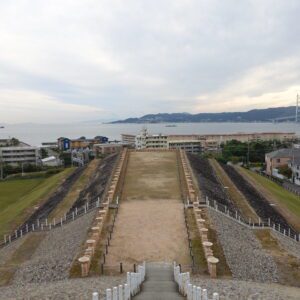
From the top of the tumulus, you can clearly see Awaji Island, Akashi Kaikyo Bridge, and Osaka Bay, which is a wonderful view. It is a wonderful view even in modern times when the buildings are lined up. How wonderful the view from the tumulus is for the ancient people, who had no buildings. It is a tourist spot that we recommend to many people to visit.
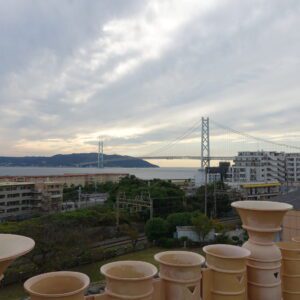
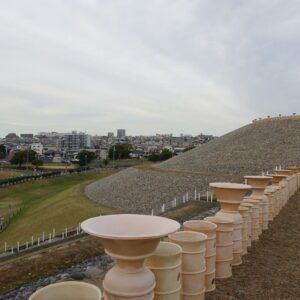
Admission free
7. The Former Residence of Sanji Muto
I went to the Former Residence of Sanji Muto, which is about a 10-minute walk from the Goshikizuka Tumulus. The Former Residence of Sanji Muto is a house built on the Maiko coast in 1907 (Meiji 40) by Sanji Mutou, who was a long-time president of Kanebo and was also active as a politician. It is a national tangible cultural property. The dining room in the building reproduces the appearance of meals. Currently, various concerts such as JAZZ performances are being held.
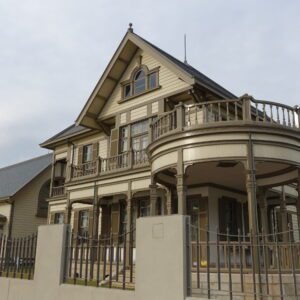


Admission: Yen100
Common admission ticket for the three residences (The Former Residence of the Kinoshita Family, The Former Residence of Sanji Muto, Sun Yat-sen Memorial Hall): Yen340
8. Sun Yat-sen Memorial Hall (Ijokaku)
I went to the Sun Yat-sen Memorial Hall (Ijokaku), which is about a 3-minute walk from the Former Residence of Sanji Muto. It is located almost directly under the Akashi Kaikyo Bridge. The octagonal three-story tower “Ijokaku” is a villa built by Kobe trader Wu Jintang in 1915 (Taisho 4). When Sun Yat-sen visited Japan, a welcome lunch was held at “Shokai Villa” of Wu Jintang by Chinese people in Kobe and volunteers from the political and business world. Currently, materials such as the relationship between Kobe and Sun Yat-sen are exhibited at the Sun Yat-sen Memorial Hall. It is a national important cultural property.

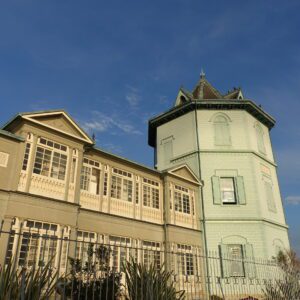
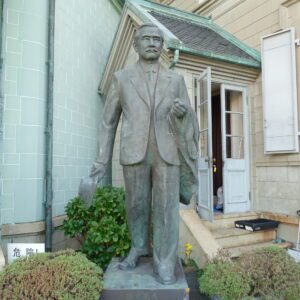
The Akashi Kaikyo Bridge seen from the Sun Yat-sen Memorial Hall is also beautiful.
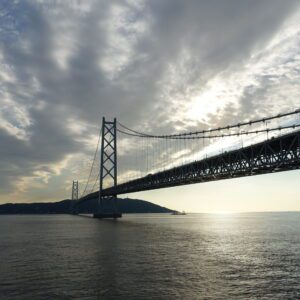
Admission: Yen300
Common admission ticket for the three residences (The Former Residence of the Kinoshita Family, The Former Residence of Sanji Muto, Sun Yat-sen Memorial Hall): Yen340
9. Kobe Harborland
I went to Kobe Harborland to have dinner. The Ferris wheel and the night view of Port Island, which is a little far away, were beautiful.
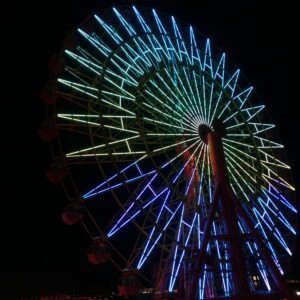
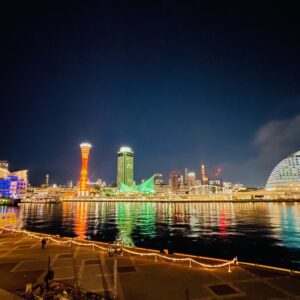
After dinner at Kobe Harborland, I returned to Tokyo from Shin-Kobe Station on the last Shinkansen (bullet train). The train I got on is as follows.
Depart Kobe at 20:34, JR Kobe Line rapid train bound for Yasu, arrive at Sannomiya at 20:38
Depart Sannomiya at 20:48, Kobe Municipal Subway Nishijin / Yamate Line, bound for Shin-Kobe, arrive at Shin-Kobe at 20:50
Depart Shin-Kobe at 21:08, JR Shinkansen Nozomi No. 64 bound for Tokyo, arrive at Tokyo at 23:45
Total fare 14,630 yen
Following the trip to Tohoku and Hokkaido in September, this trip to Hokuriku and Kinki was also a fulfilling and good trip. I plan to post the Kyushu travel edition in the Japan itinerary in November.
Note: The departure / arrival times, fees, and admission fees for transportation listed in the text are as of the time of writing the BLOG. Please check for yourself when you go on a trip as it may change in the future.